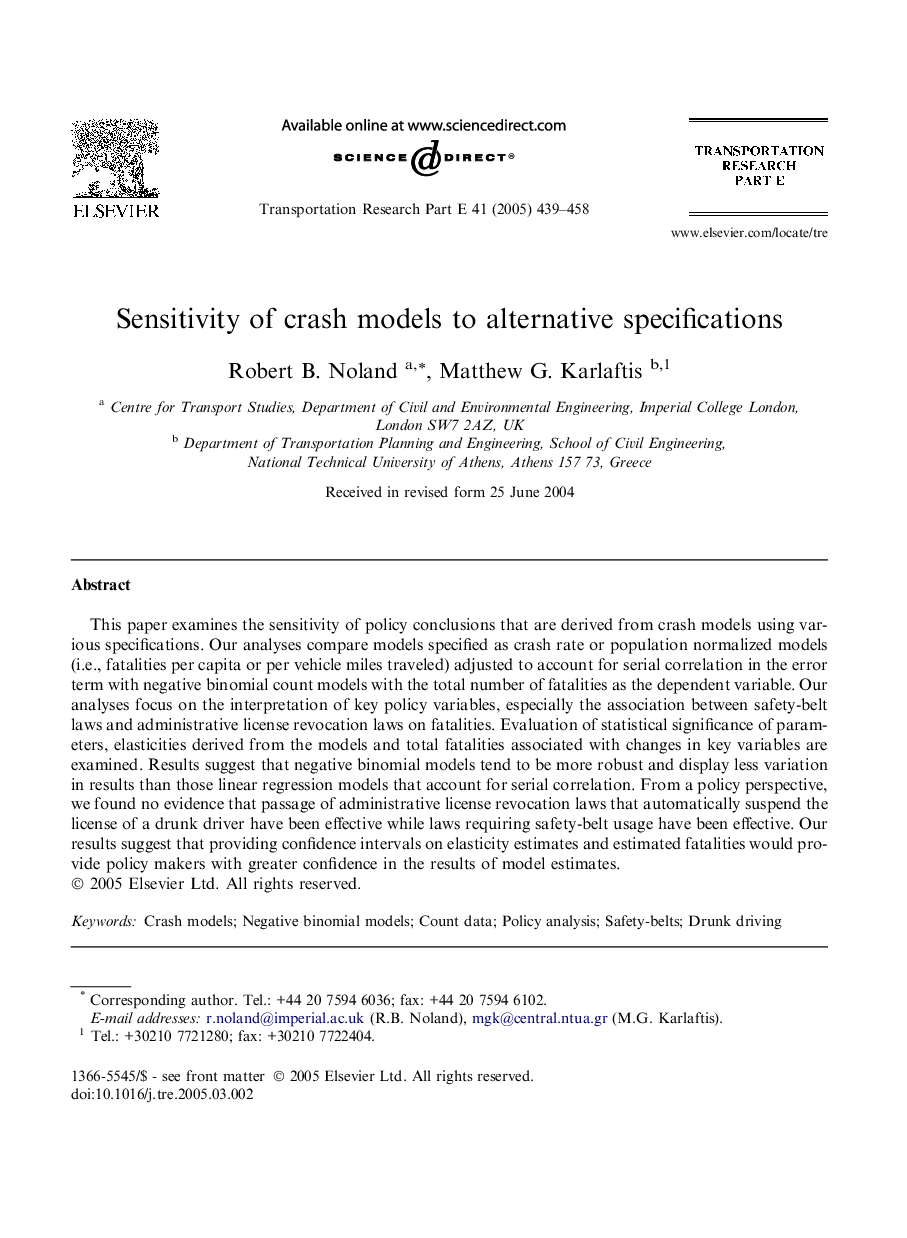| Article ID | Journal | Published Year | Pages | File Type |
|---|---|---|---|---|
| 10495493 | Transportation Research Part E: Logistics and Transportation Review | 2005 | 20 Pages |
Abstract
This paper examines the sensitivity of policy conclusions that are derived from crash models using various specifications. Our analyses compare models specified as crash rate or population normalized models (i.e., fatalities per capita or per vehicle miles traveled) adjusted to account for serial correlation in the error term with negative binomial count models with the total number of fatalities as the dependent variable. Our analyses focus on the interpretation of key policy variables, especially the association between safety-belt laws and administrative license revocation laws on fatalities. Evaluation of statistical significance of parameters, elasticities derived from the models and total fatalities associated with changes in key variables are examined. Results suggest that negative binomial models tend to be more robust and display less variation in results than those linear regression models that account for serial correlation. From a policy perspective, we found no evidence that passage of administrative license revocation laws that automatically suspend the license of a drunk driver have been effective while laws requiring safety-belt usage have been effective. Our results suggest that providing confidence intervals on elasticity estimates and estimated fatalities would provide policy makers with greater confidence in the results of model estimates.
Related Topics
Social Sciences and Humanities
Business, Management and Accounting
Business and International Management
Authors
Robert B. Noland, Matthew G. Karlaftis,
